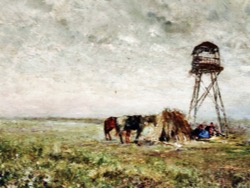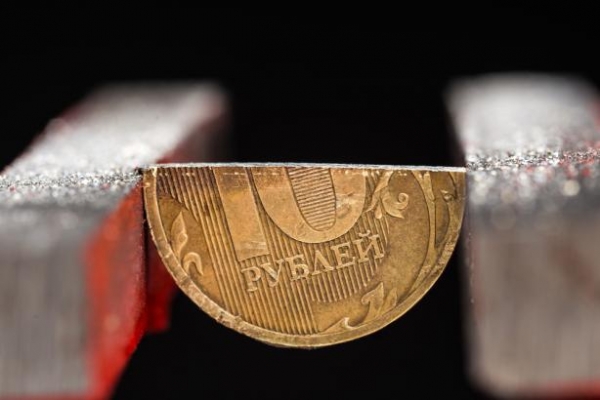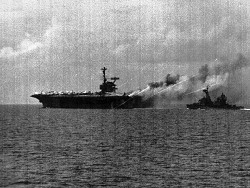
Russia at all times was a country in which extremely highly valued centralization and power of the state. This is largely due to the fact that, being the center of “frontier” culture, located at the crossroads of Europe (later West) and “wild field” (later Asia), Russia and Russia has always sought to prove themselves the opposite — his integrity and self-sufficiency.
Show full profile… It became the Foundation of Russian identity, in which the idea of exclusivity is a very special place — but we aren’t talking about it.
The downside of the culture of centralization inevitably is the polarity of the centre and is usually taken to speak of regions but historically it would be more correct to use the notion of margins. Even that country that Russian propaganda today is paying more attention than, like, the Russia — Ukraine — got its name only in the XVI–XVII centuries from the perception of it by the Russians as the “outskirts” of the state. It is symbolic that in the Ipatiev and Galicia-Volyn Chronicles “Ukraine people” was called by the inhabitants of Transcarpathia, and in the XVI century, when Russia was much more limited geographically in the West — already Cossacks. We also had “Pskov Ukraine”, and all sorts of others (see Gaida, Fedor. From Moscow and Ryazan to Transcarpathia: the origin and use of the word “Ukrainians” in: Rodina, 2011, No. 1), which was increasing with the expansion of the state, but which, as shown, was the same than they were — the suburbs, designed first to protect the state center, then enrich it, but to a much lesser extent to develop themselves.
It is in our suburbs today, you can see the glaring outdated Russian state, which, though for centuries and became a continental power, but never learned to adequately handle their territory. It is enough to compare Russia with the United States — as “colonized itself” country — to see these distinctions blurring between the mass of rich Moscow and the impoverished periphery, and a rigid loop (from New England to Florida, Texas, California and to the States of Washington and Illinois) at a far less developed Central regions. Even China’s desire to create an area of rapid economic growth in the West, to develop the Tibet and Inner Mongolia in addition to successful coastal Eastern provinces indicates that the lack of attention to the margins is interpreted as the error nearly all over the world. But not at us.
In a short article cannot describe in detail all of our disparities, but it is possible to note how different were the ways of development of territories, which during the vicissitudes of history had been under Russian dominion, then left, then came back.
Probably the most ambitious (but not most impressive) example, of course, Alaska. Successfully sold to USA in 1867, this area was not able to be successfully managed in a centralized Empire, but gained a great perspective of where the most valued business and even adventurism. And even if during the Second world war could be considered a purely material level of development of Chukotka and Alaska comparable (I’m not saying that one side of the Strait prospered GULAG, and on the other there was generally a free society, though not devoid of prejudice and discrimination), today any comparisons are not in favor of Russia. By the end of 2015 of per capita gross regional product of the Magadan region was $10,6 thousand (650 thousand), whereas Alaska is almost $76,7 thousand (6,75% of households statewide have net assets worth $1 million and above). As in the North-Eastern regions of Russia, the main revenue generating industries in Alaska are the extractive industry, but with almost all of their production is consumed within the United States, as dominant exports are fish and seafood, which is in the state harvested more than the entire Russian Pacific coast. The economy determines the budget of the territory: for 2016 in the Magadan region of its revenues planned in the amount of 28 billion rubles ($400 million), Alaska at $8,52 billion However, all these differences are due to different principles of development: Eastern edge of Russia was always subordinated to the logic of mega-projects, remote areas of America were a land of opportunity and private initiative. When the planned economy collapsed, the life faded: today on the whole territory of the far Eastern Federal district operates 91 airport serving largely flights the major domestic airlines (according to Interfax), whereas in Alaska they 256 managed by the state authorities, and about 300 that are permitted to take-off and landing aircraft with a capacity of more than 17 people and nearly 3 thousand runways for private aircraft; the equipment is used for maintenance registered in the state of 12,6 thousand aircraft. Only air transport to Alaska or from Alaska to mainland USA for 12 months from August 2014 to July 2015 has travelled 1.6 million people, which is three times higher than the number of the adult population of the state; to compare with Russia I will not be here. The impossibility of connection with the main territory of the country causing the Exodus of the population and the decline of the region over the last 25 years the number of inhabitants of Magadan declined from 152 to 96 thousand people, while in anchorage it grew from 226 to 298 thousand. The comparison can be continued, but the downfall is understandable: is it a crazy overregulation of everything in the Russian suburbs, coming from the center. It is to Alaska as a Russian citizen, you can come with the American visa without any additional documents, although the American in Magadan is not easy to get; it’s in Alaska you can buy a bowl and go to any river to try to pan for gold and if successful pass it to dozens of commercial purchases, but in the far East for the company you’re looking at very real time. Everything else is a sovereign Fund and technological progress, international relations of the regions, etc. is purely secondary. The economy under conditions of servitude is not developed, people, when authoritarianism is sent to protect the borders of the homeland and to assimilate its (not his) wealth away. But conclusions as we do, and not do.
This can be seen in greater relief on the other end of the country, in the Kaliningrad region. In the recent past — a part separated from Germany and divided between the USSR and Poland of East Prussia, the most Western region of Russia is developing at an amazing “trajectory”. This area falls out all the traditional growing economies of the schemes: as a coastal area, it has the index of GRP per capita is 36% lower than the national average (in the coastal provinces of China it is superior national at 47 to 78%, and in coastal States of Brazil — 19-37%), and its budget is filled by subsidies from the center… 74% (see attached document). And this is not surprising, given that the traditional sectors of the economy just killed in 2014 in the Russian Baltic exclave there were 11 times (!) fewer pigs and 16 times fewer cows and bulls than it was in East Prussia in 1938, and arable land amounts to 12% of the territory against the then 72%. If in the 1930s, one third of the pork carcass, sold in the famous in Germany of the Munich agricultural fair, when life is running around the earth East Prussia, now the Kaliningrad region more than two-thirds dependent on imported food. The cause of the problem is clear here: on the one hand, the Moscow authorities categorically do not accept that the special status of that region should have, by its geographical position (surrounded by EU countries, it could be a perfect transit hub for air transport, meeting place of businessmen and young people, if to visit her foreigners was abolished visa regime that is technically easy to do); on the other hand, the development of the region since the 1990s, has gone the way of creation here (sic!) importations of FEZ, which is not and was not anywhere in the world. Traditionally free economic zones are established to promote exports, thereby reducing the potential impact on the regional economy the potential economic problems of the country and increasing its competitiveness, but Russia decided otherwise, having focused Kaliningrad on partial revision of foreign products and its delivery inside the country. Of course, the experiment was unnecessary after Russia’s accession to the WTO and finally kicked the bucket with the start of the economic crisis. Although, it would seem, Kaliningrad has long been become a sort of Hong Kong on the Baltic, its airport becoming a major hub in the region, and to newly built with the help of German sponsors and Trustees Albertina European professors could teach the Russian students to obtain international education would not have to leave the country (see: Inozemtsev, Vladislav. “Why Kaliningrad should become a “Russian Hong Kong”” in: RBC-Daily, 2014, August 21, p. 5; Inozemtsev, Vladislav. “Kaliningrad transit” in: the Janitor [Kaliningrad], 2013, No. 7, 5-12 March, pp.. 1-3, 7). But more important for us not to develop the territory, and to “defend the country”, and because in the Kaliningrad region, almost 40% of the land designated for the Ministry of defence and foreign investments (mainly represented almost idle now, “Avtotor”) per inhabitant amount to only €713 compared to €2.8 thousand in Poland and €3.8 thousand in Lithuania. It is no exaggeration to say that going to Kaliningrad subsidies from Moscow feeding the neighboring Polish voivodeships, in which the region’s residents purchased almost everything needed.
Recently, Dmitry Rogozin, who visited the marine plant in Feodosiya, there was a sense that this company had been bombed by Ukrainian aircraft. You can advise the Deputy Prime Minister to visit former Finnish Viipuri (now Russian Vyborg), the majority of the buildings which, it seems, only yesterday survived a massive bombardment by artillery of the Leningrad front. Today the standard of living in the territories annexed from Finland by the USSR in 1940-e years, on average six times lower than the Finnish side of the border. And even in the most successful (by formal per capita gross regional product) is a distant region of Russia, on Sakhalin, this figure is two times lower than the Japanese, and the main income of the region receives from oil and gas production, organized, as we know, is not “Gazprom” or “Renetto” (completely retell the story, I think not).
Now, of course, Russia has a new hobby. Attached in 2014, the Crimea, increasing the space of our glorious power by as much as 0.14%, and restored the pride of the great Russians — largely because that was probably the only over the past century, the territory on which Russia had brought, if not for more freedom, higher living standards. However, for better or worse, the annexation of Crimea comes at a time of the highest economic growth of Russia — and because it is likely, “manna from heaven”, leaked to the Peninsula, already close to exhaustion. If we follow historical logic, we can assume that, after retiring from the Russian custody, the Russian main on(I)APC will head to Europe, and — though not tomorrow — we’ll see on the shores of the Black sea about the same ratio, which can already be found on the shores of the Baltic, and on opposite sides of the Straits of Bering and La Perouse. Unless, of course, Russia will not reconsider the relation to its own periphery and will not understand what it is they “hold” state building in the minds of our elites are limited to only one of the Kremlin walls — but, alas, hopes a little.








